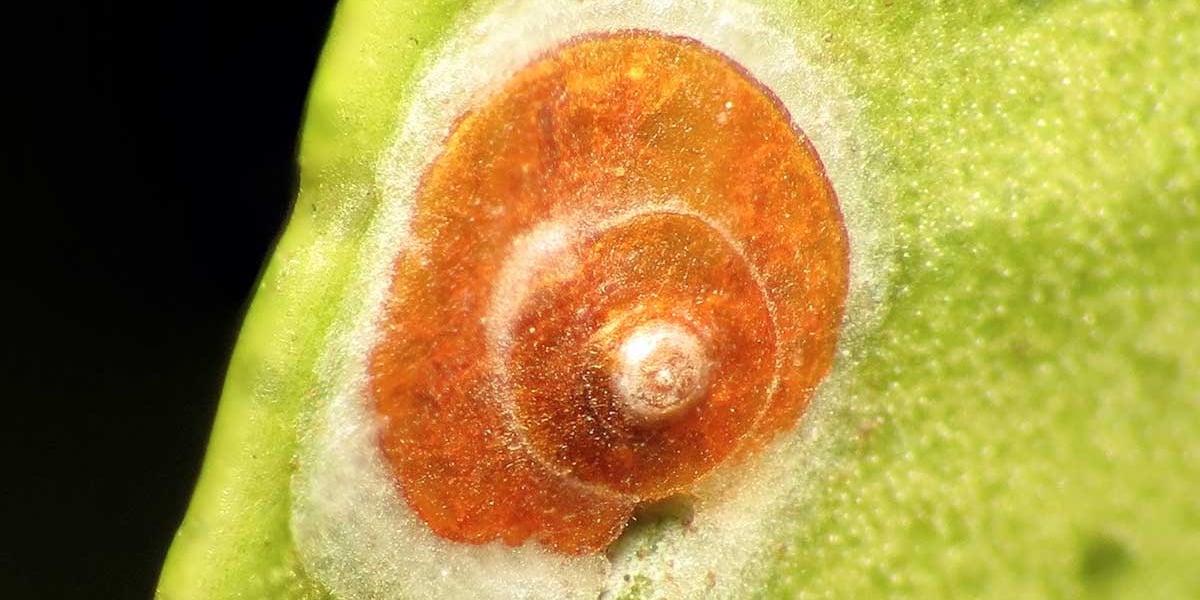


You may have observed small numbers of California Red Scale males in pheromone traps ahead of the first flight ( defined as two consecutive weeks of increasing capture after February 1st).
Degree-day accumulations in individual orchards may vary depending on altitude, row orientation, and other factors. We encourage early deployment of CRS pheromone traps in your orchards along with local recording thermometers to most effectively predict flights.
by Greg Montez, Suterra Technical Field Manager
California red scale crawler emergence is expected approximately 550 degree-days after each male flight biofix. Based on 20-year average temperatures, the emergence is expected to occur sometime during the second week of May. The ‘crawler’ or first instar phase of CRS is the most susceptible to conventional insecticide management practices, provided that spirotetramat is applied 10 to 14 days before crawler emergence. This is because spirotetramat is translocated from foliage to the roots of the trees, where it is metabolized into its active form.
If you intend to apply insect growth regulators, you may want to wait until the crawlers settle down and form a white cap. When the insects reach this stage of growth, you are in the optimal timeframe to apply growth regulators (e.g., pyriproxyfen, buprofezin) since they prevent further development.
Now that the insecticide chlorpyrifos is no longer a viable option, pheromone–based mating disruption is gaining much traction and has been proven effective throughout the Central Valley of California over the last five years. Checkmate CRS-Dispenser effectively blocks the male CRS from finding a female to mate with. Using the insect’s own chemistry against it, CRS-Dispenser is deployed over an entire orchard and will last for the entire season with one application.
These dispensers are typically placed in an orchard anytime from the second week of February to the onset of the first (or even second) flight of CRS. Growers should take care to avoid applying dispensers incorrectly, whether too low on the tree or on an outside branch where it would be susceptible to being pruned off or impacted by exposure to direct sunlight. To correctly place the trap, hang it five to seven feet from the soil surface and an entire arm’s length into the canopy.
CheckMate CRS dispensers are intended to stay in the tree until they are pruned out at the end of the season. If they are on a larger scaffold branch in the tree interior, then they can be left as-is or removed. The dispensers are not affected by any other insect management product and are approved for organic production (always check any product use with your organic certifier).
The current increase in California Red Scale may be traced back to applications of insecticide to control Asian citrus psyllid (ACP) which has harmed the natural parasites of CRS, and also to the onset of insecticide resistance with the conventional chemicals that are being used. Pheromone based mating disruption helps alleviate the development of insecticide resistance by keeping the genetics of the insect from advancing to the next generation.
Suterra CheckMate CRS-Dispensers are a non-toxic, effective and sustainable tool to control this pest in citrus and any other crop affected by CRS. If you have any questions about monitoring, mating disruption, or integrated pest management, the team of specialists at Suterra are happy to help. Contact your local representative or email us online using this form.
Information provided herein does not constitute a recommendation. Always consult with your PCA to determine the best pest management practices and timings for your operation. Adhere to state and local regulations and the current pesticide label and check with your organic certifier.